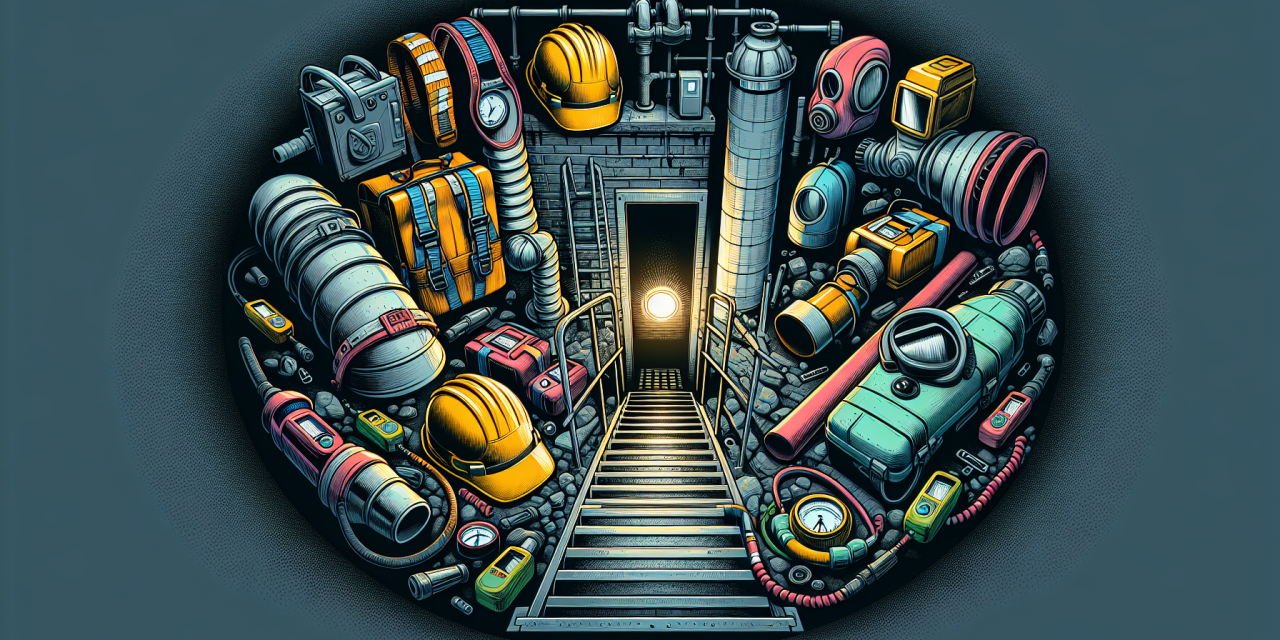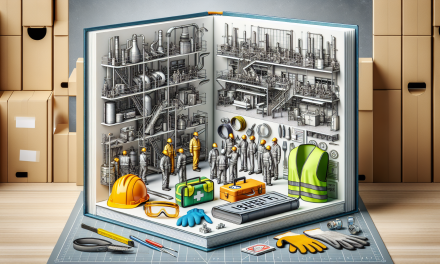Table of Contents
- Understanding Confined Spaces
- Importance of Awareness
- Regulations and Compliance
- Key Safe Work Practices
- Monitoring and Communication
- Responsibilities of Employers and Employees
- Frequently Asked Questions
- Conclusion
Understanding Confined Spaces
Many workplaces feature areas that can be classified as confined spaces. Essentially, confined spaces are locations not designed for continuous human occupancy, yet they have restricted entry and exit, which can pose unique challenges and hazards to workers. Examples include tanks, silos, sewers, and pipelines. Moreover, these spaces can contain harmful substances, lack oxygen, or harbor other serious risks.
Identifying Confined Spaces
Recognizing confined spaces is the first step towards ensuring safety. Typically, these spaces must meet the following criteria:
- They are large enough to permit worker entry.
- They have limited means for entry and exit.
- They are not intended for continuous occupancy.
Consequently, organizations must proactively identify and assess any work areas that fit this definition to maintain a safe environment.
Importance of Awareness
Being aware of the dangers associated with confined spaces is crucial for all employees. Complacency can lead to accidents; hence, consistent education and awareness efforts play a vital role in safety. Subsequently, additional knowledge empowers workers to respond effectively to emergencies, mitigating potential risks.
Common Hazards in Confined Spaces
Awareness involves understanding common hazards. Some of these include:
- Chemical exposure: Harmful gases or fumes can quickly accumulate.
- Oxygen deficiency: Enclosed areas may not provide sufficient oxygen.
- Engulfment: Loose materials, liquids, or solids can bury a worker.
- Temperature extremes: High heat or cold can cause health issues.
- Physical hazards: These might include moving machinery or falling objects.
Being cognizant of these hazards can greatly enhance safety measures.
Regulations and Compliance
Understanding and complying with regulations surrounding confined spaces is paramount. Various organizations, such as the Occupational Safety and Health Administration (OSHA) in the United States, have established detailed standards to protect workers from the dangers of confined spaces. Compliance ensures not only the safety of workers but also the legal protection for organizations.
Key Regulations to Consider
Some of the critical regulations include:
- Permit-required confined spaces (PRCS): Not all confined spaces require permits—however, many do. Organizations must create a clear system for determining which spaces need a permit.
- Training requirements: Employees must undergo relevant training before entering confined spaces. Understanding procedures, hazards, and rescue methods is crucial.
- Atmospheric testing: Before entry, the atmosphere must be tested to ensure the safety of workers.
Adhering to these regulations ultimately creates a safer work environment.
Key Safe Work Practices
Implementing solid safe work practices can prevent accidents in confined spaces. Below are several practices that organizations should adopt to enhance safety.
Preparation and Planning
Before anyone enters a confined space, thorough preparation is essential. This preparation should include the following steps:
- Risk assessment: Conduct a detailed risk assessment for each confined space operation. Identify potential hazards and solutions.
- Develop entry procedures: Establish clear entry and exit procedures. Additionally, create guidelines for using personal protective equipment (PPE).
- Secure necessary permits: Ensure that all required permits are obtained before initiating work.
Atmospheric Testing
Additionally, testing the atmosphere before entry cannot be overstated. Proper equipment must be used to monitor oxygen levels and detect hazardous gases. Therefore, continuous monitoring should take place during the entire operation.
Effective Communication
Furthermore, effective communication among team members is vital. Utilizing radios or other communication tools helps keep everyone informed about potential safety breaches or emergencies. Moreover, establish a signal or code for emergencies to ensure a quick response.
Proper Supervision
Continuous observation and supervision of the confined space work environment are necessary. A trained supervisor should be present to monitor all activities and ensure adherence to established safety protocols.
Emergency Preparedness
Moreover, planning for emergencies is critical. A well-structured rescue plan needs to be in place. First, identify potential emergency situations. Next, ensure that all employees are trained on the rescue plan. Having the necessary equipment readily available can make a significant difference in emergencies.
Monitoring and Communication
Effective monitoring and communication systems play a significant role in confined space safety. Continuous monitoring of atmospheric conditions, worker health, and overall safety is essential.
Monitoring Systems
Use reliable monitoring systems to continuously test the atmosphere in confined spaces. For instance, portable gas detectors can promptly alert workers to any dangerous changes in air quality. Moreover, schedules for regular inspections help identify any deficiencies prior to work commencement.
Communication Tools
In addition to monitoring, utilizing communication tools ensures that everyone remains informed and safe. Regular check-ins can help gauge each worker’s safety and health status. Overall, clear lines of communication can significantly reduce risks.
Responsibilities of Employers and Employees
Everyone involved in confined space operations carries a responsibility for safety. Understanding these responsibilities is crucial in maintaining a safe work environment.
Employer Responsibilities
Employers must take proactive measures to ensure safety in confined spaces, including:
- Providing adequate training and resources for employees.
- Implementing safety protocols that adhere to regulatory standards.
- Ensuring that safety equipment, such as PPE, is available and maintained.
- Conducting regular safety audits to identify potential hazards.
Employee Responsibilities
Meanwhile, employees need to take their responsibilities seriously. Workers should:
- Be familiar with the risks and safety procedures associated with confined spaces.
- Utilize the correct safety equipment and follow established protocols.
- Report any unusual conditions or hazards.
- Participate in safety training and drills regularly.
By working together, employers and employees create a safer workspace.
Frequently Asked Questions
What is the primary purpose of confined space training?
The primary purpose of confined space training is to educate workers about the hazards associated with confined spaces and the safety measures required to work safely in those environments. Proper training fosters a culture of safety and prepares employees to respond effectively to emergencies.
What are the most common hazards in confined spaces?
Common hazards include inadequate oxygen levels, toxic gases, flammable substances, engulfment risks, and physical dangers such as moving machinery. Adequately assessing these hazards is essential for maintaining safety.
How can teams effectively communicate during confined space work?
Teams can communicate effectively by using radios or other communication tools to stay connected. Establishing clear signals for emergencies or safety breaches can also enhance communication.
Where can I find more resources about confined space safety?
For further information, consider visiting the Confined Space Entry & Safety Compliance Training Course for comprehensive safety training. Additionally, numerous articles highlight various aspects of workplace safety, such as essential health and safety practices and effective safety management strategies.
Conclusion
In conclusion, confined space awareness and compliance are pivotal in ensuring worker safety. Understanding the risks, diligently adhering to regulations, and implementing effective safe work practices create a safer environment for everyone involved. Ultimately, fostering a culture of safety through training and continuous improvement leads to outstanding safety achievements in confined spaces. Always prioritize a proactive approach towards safety, and ensure everyone plays their part in maintaining a secure working environment.





